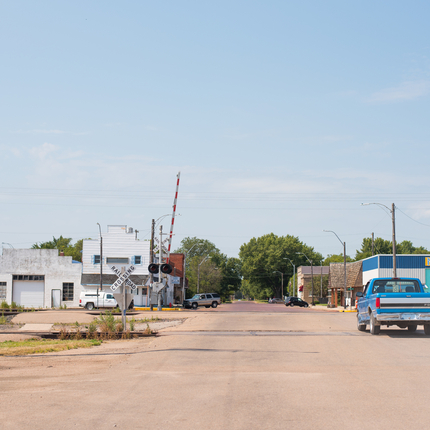Access to capital—who can get money and what they are able to do with it—shapes most everything in rural communities. For 50 years, the Center for Rural Affairs has worked to strategically align capital so everyone who calls rural American home can fully participate in community and economic life.
Our landmark 1974 report “Who Will Sit Up with the Corporate Sow?” traced the financing behind the early consolidation and corporatization of the hog industry. Our 1978 report, “Where Have All the Bankers Gone?” shined a light on how bank consolidation led to reduced access to banking services and disinvestment in rural places.
For decades, we’ve worked alongside you to change federal policy to better align investments in agriculture and rural development with our goals of sustainability and widespread ownership. When we won new programs, we worked with you to make sure you could access them for your farm, your business, or your community.
In 1990, the Center launched its own microlending program modeled off of the international microfinance movement. In 2013, we became a certified Community Development Financial Institution.
Today, our direct lending helps local entrepreneurs overcome systemic barriers to capital including language, geography, immigration status, education, credit, being a start-up, and having out-of-the-box business ideas. This program helps create opportunity and keeps communities vibrant.
The Center is now working to expand our community-based lending. We began making single-family home loans in Nebraska in 2021, lending $2.1 million across 32 homes so far.
In 2023, we launched a major new effort with support from the U.S. Department of Agriculture to provide loans to small and midsize meat lockers. These businesses are Main Street employers, provide important market access for small livestock farmers, and create resilience in the food chain.
We are implementing this program both inside and outside of Nebraska, marking our first multi-state lending project. This new initiative is the first step toward a broader regional food systems lending program planned for launch between 2025 and 2027.
Center staff is also researching how we might offer new lending in the area of household and community solar. The falling cost of solar power, along with new incentives in the Inflation Reduction Act, will make solar increasingly viable for homeowners, business owners, and local utilities.
Center staff members are meeting with communities, solar developers, and partners to learn how low-cost capital can support a faster transition to solar power and ensure the benefits of solar reach low-income and disadvantaged households.
While systemic barriers have made it harder for rural individuals to access capital, the Center is focused on continuing to develop new solutions to meet evolving needs. We understand that getting the right kind of money in the right hands is critical to achieving our vision of vibrant rural communities.




